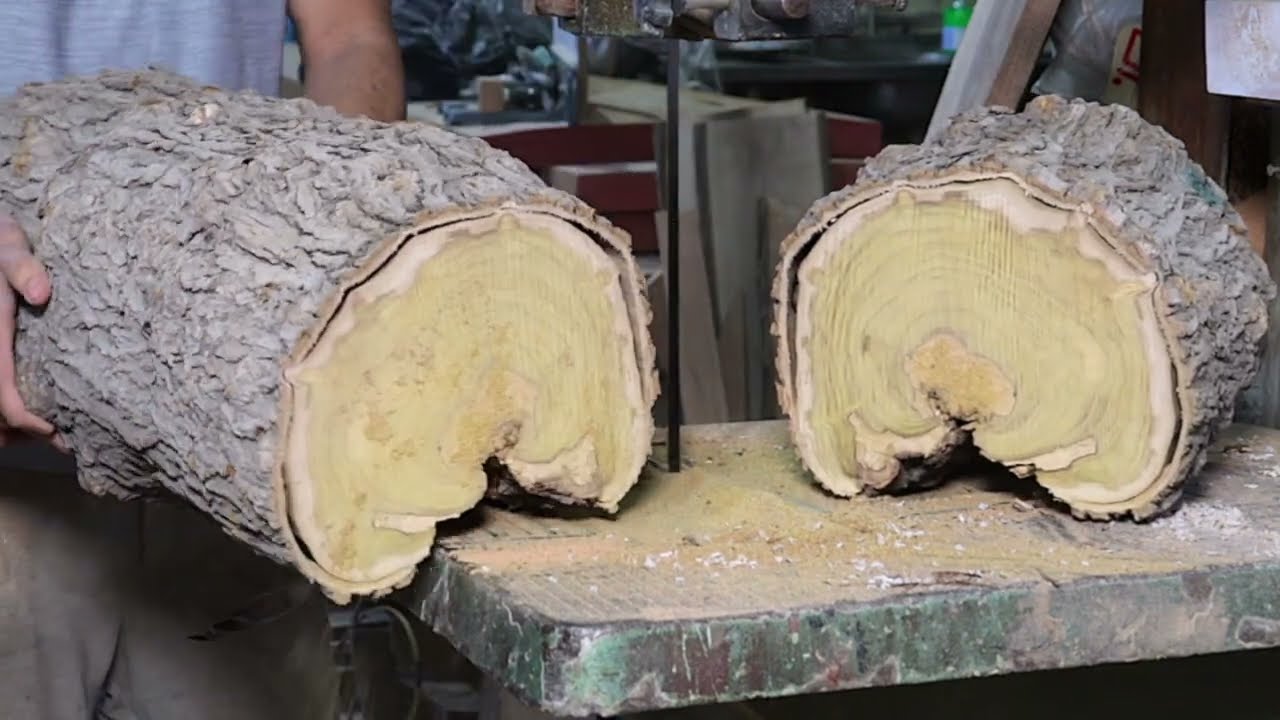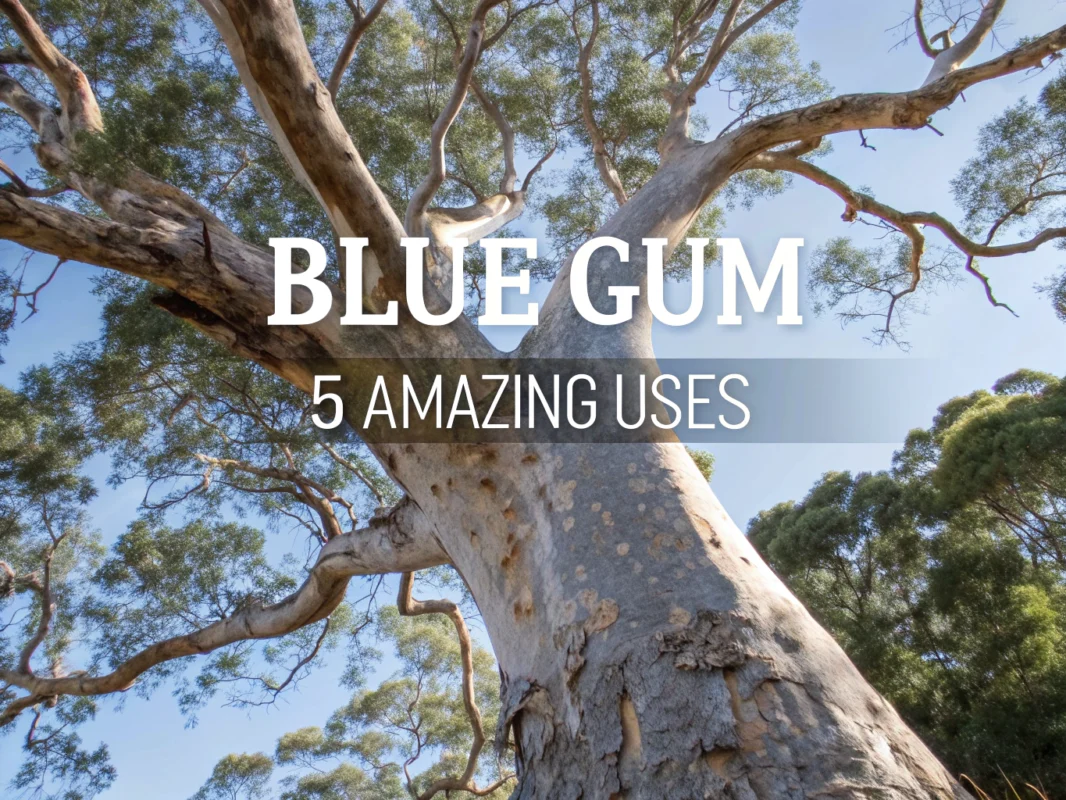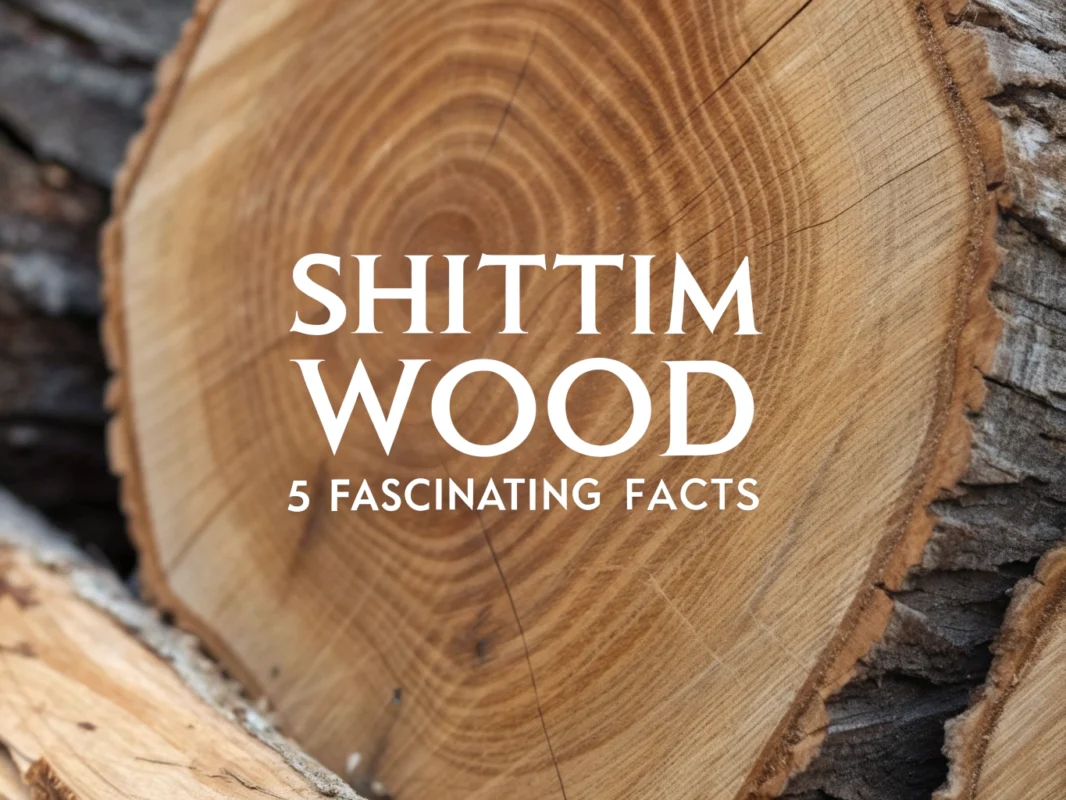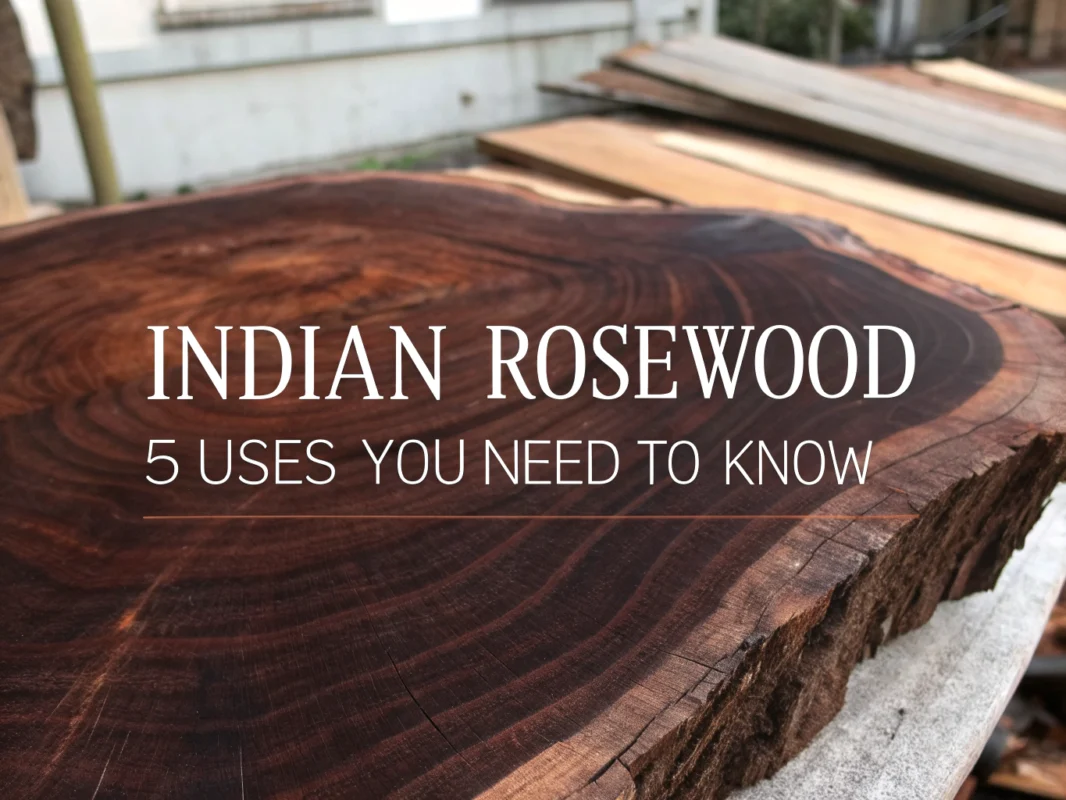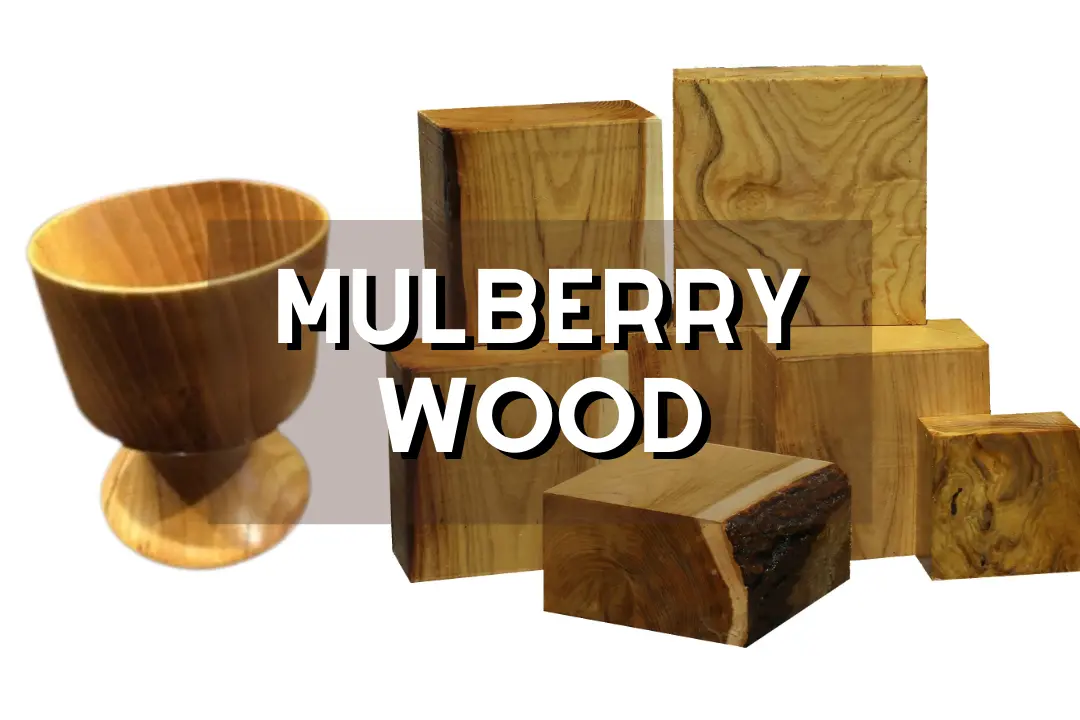
Mulberry Wood: 5 Fascinating Facts to Know

Ever seen mulberry wood glow yellow-green, then deepen to honey brown? This tough wood holds up outside and looks better with time. In a few quick facts, we cover color, durability, fruitless mulberry, handy uses, and simple care so your next project starts strong.
Table of Contents
Mulberry wood offers a striking color story—fresh boards start bright golden and mellow into deep brown—while holding a rare mix of rot resistance, stability, and workability that suits indoor and outdoor builds. I’ll break down the color of mulberry at a glance, compare it with Osage Orange, show durability metrics, explain fruitless mulberry parity, and share practical tips for finishing, storage, and safe woodworking.
1. Color of mulberry wood
Color of mulberry, at a glance
I see mulberry start out as a bright, golden yellow-brown that turns richer with time and light, often reaching a medium to reddish brown. According to the Wood Database, the heartwood darkens with age while the sapwood stays pale, which is why the color of mulberry feels dynamic across a project’s lifespan.
- Freshly cut: vivid yellow-gold with high contrast against pale sapwood
- After months: browner, warmer hue; grain figure becomes more pronounced
- After years: deeper medium to reddish brown; soft glow under film finishes
- Under oils: color pops quickly; UV still deepens tone across seasons
I like to photograph boards on day one and again after a few weeks in shop light to plan final color. That simple habit helps me match panels and balance the hue on large projects like tables or casework.
Heartwood vs sapwood
Mulberry heartwood lands in golden to medium brown ranges and keeps darkening with UV exposure. Sapwood trends creamy white to pale yellow, so I either feature the contrast intentionally on live-edge pieces or dye it to blend if a uniform tone matters.
For cutting boards, I prefer heartwood-dominant layouts since the darker surface hides wear a bit better. If the board will see bright kitchen light, I plan for the heartwood to mature into a deep honey-brown within the first year.
Grain and texture
Mulberry usually has a straight grain with a medium, even texture that reads clean under oil. The grain looks a lot like a simplified ash: bold earlywood pores and calmer latewood, which makes the figure easy to balance in furniture panels.
It sands to a smooth surface without much fuzz, though I’ve found 180/220 grits give a better base before oil than jumping straight to 320. A final light scuff with 320 or 400 reduces raised grain when using waterborne finishes.

Ring-porous anatomy
Mulberry is ring-porous, so you’ll notice a band of larger earlywood pores followed by finer latewood pores each growth ring. That anatomy gives strong annual lines, a mild chatoyance, and a texture that takes oil beautifully but may need a grain filler for glass-smooth film finishes.
I’ll sometimes apply a light filler or a few rounds of wipe-on varnish and sanding to calm the pores. For a natural feel, a hardwax oil keeps the surface warm and touchable without hiding the ring pattern.
Natural luster
The wood carries a subtle natural luster that turns into a gentle glow under oil. If I want more pop, I hit it with a thinned shellac wash coat, then build a varnish film or a few coats of waterborne poly for clarity.
For rustic or live edge designs, I keep it simple: oil, wax, and a burnish. That approach highlights the grain without looking plasticky and pairs well with raw steel or matte black hardware.
Mulberry vs Osage Orange
At first glance, mulberry can look like Osage Orange, especially fresh off the saw with that sunny, golden tone. Osage is usually heavier, harder, and more neon-yellow when fresh; I compare density and early UV-shift to tell them apart, and I keep this quick guide on Osage Orange wood handy for reference on projects that demand precise identification.
Both species age toward brown, but Osage tends to darken faster in strong light. If a client wants the brightest yellow possible at installation, Osage often holds that tone longer before mellowing, while mulberry gives a softer, golden look out of the gate.
2. Durability, resistance, and stability
Rot and insect resistance
Mulberry ranks high for natural rot resistance and shrugs off insect pressure in typical service. I’ve used it for outdoor parts that would challenge many temperate species, and the longevity shows even with minimal maintenance.
The wood’s natural extractives help defend against decay, so fence posts, planters, and boat trim are all fair game. That said, I still advise smart design: keep end grain out of standing water and let the piece drain or breathe.
Weathering outdoors
Left unfinished in sun and rain, mulberry weathers to a silver-gray similar to teak or oak. An oil or spar varnish slows that shift, but UV will still warm the color and then gray the surface over time, so plan a maintenance schedule if appearance matters.
For posts and rails, I brush an oil-based sealer on end grain and set posts on gravel for drainage. Small design changes like those cut down on checks and keep hardware tight for years.
Durable hardwood metrics
Here’s a compact snapshot of the key numbers I use for planning builds and finishes. These figures match shop experience and published data from the Wood Database, and they place mulberry among reliable, durable hardwood options for furniture and exterior parts.
| Property | Typical Value | Practical Notes |
|---|---|---|
| Janka hardness | ≈ 1,680 lbf | Resists dents on floors and tops; favors sharp cutters |
| Average dried weight | ≈ 43 lb/ft³ (690 kg/m³) | Solid feel without being overly heavy in furniture |
| Grain type | Ring-porous | Bold growth rings; benefits from pore-filling for glossy finishes |
| Dimensional behavior | Stable | Straight grain limits warping; seal ends to prevent checks |
| Natural durability | High | Great for posts, outdoor accents, and boat trim |
Warp and split behavior
Boards with straight grain dry well and usually stay flat, even in wider widths. I do watch the ends, since mulberry can develop end splits without a sealer; a quick coat of wax or anchor seal saves a lot of material on slabs.
During machining, I keep feed rates moderate and always inspect for micro-cracks near knots. Clean passes and sharp knives reduce chip-out along the earlywood bands.
“Wood that will not rot”
Many woodworkers call mulberry “wood that will not rot,” a nod to its long history in outdoor work.
I treat that phrase as a compliment to its performance—not an invitation to skip smart design. Give it airflow, shed standing water, and protect end grain; do those things and its service life gets impressively long for fences, garden seating, and coastal accents.
If you compare to other tough species like black locust, mulberry sits in similar durability territory for many small builds, but with gentler machining and a more golden tone when fresh.
3. Species, fruitless mulberry, and sourcing
White, red, black species
The genus Morus holds many species; in woodworking, white mulberry (Morus alba), red mulberry (M. rubra), and black mulberry (M. nigra) are the usual suspects. I’ve found color shifts and density vary slightly among them, but the core traits—ring-porous grain, natural durability, and a golden-to-brown heartwood—stay consistent across boards sourced from reliable mills and urban removals, as summed up in this overview from BuildDirect.
Red mulberry is native to parts of North America, while white mulberry spread widely thanks to silk cultivation. Black mulberry tends to yield darker, richer tones in my shop, especially after a few months of light exposure.
Fruitless mulberry wood parity
Fruitless mulberry gives you the same wood quality as fruiting trees but without the messy berries in yards and on sidewalks. Every fruitless log I’ve milled showed classic mulberry traits: bright golden color, straight grain, high durability, and smooth finishing behavior.
If a city or homeowner removes a fruitless shade tree, I always ask about reclaiming the trunk. That’s a steady way to source slabs for live-edge projects with a minimal footprint.
Range and growth
Landscape trees usually run 30–50 feet tall with moderate trunk diameters. I see frequent limb architecture and crotches that produce attractive figure for turning blanks and small slab tables.
Because trunks can be modest in diameter, wide clear boards can be rare. That’s why I often pair narrower boards with balanced panels or accept knots and feature the natural character in furniture design.
Silk industry connection
White mulberry leaves feed silkworms, which makes the tree economically valuable far beyond woodworking circles. In regions with a silk tradition, pruning waste and orchard removals can become a great source of small-dimension stock for crafts and turning.
I’ve bought excellent turning blanks from pruned branches and short trunk sections. That supply chain keeps useful wood in circulation and gives small shops affordable, sustainable material.
Sustainability and sourcing
Mulberry rarely shows up in nationwide lumber inventories, so I look local. Urban forestry removals, storm-fallen trees, and landscape upgrades yield most of the slabs I’ve used, and that keeps milling and transport impacts low.
For live-edge buyers, small mills and specialty yards are your friends. I ask about air-drying time, moisture content, and end sealing, then sticker and acclimate at my shop so the boards stay stable during glue-up.
4. Mulberry wood uses and projects
Furniture and flooring
Mulberry’s 1,680 lbf hardness gives furniture legs and aprons a solid feel, while the mellow gold-to-brown color pairs with black or brass hardware. I like it for benches, accent tables, and media consoles where a warm tone and straight grain read clean and modern.
For flooring, think rustic or small rooms that want warmth without heavy grain drama. It takes an oil-poly blend well; I prefer satin for low glare and a finish that lets the color speak.
Outdoor posts and boats
Mulberry earns its keep outdoors as posts, rails, and trim that see intermittent wetting and drying. I still seal ends and provide drainage paths, but the wood’s extractives handle weather far better than many domestic species.
On small boats, I use it for coamings, thwarts, and tillers where a smooth hand-feel matters. A few coats of spar varnish or a marine oil refresh keeps the grain lively and the color warm.
Woodturning and crafts
Turners like mulberry for steady fibers and a golden hue that finishes clean with friction polish. I prep blanks by sealing ends, rough turning green, then bagging with shavings before a slow dry and final turning.
Knife scales, mallets, bowls, and small lidded boxes all shine in this species. If you enjoy fruit woods like apple wood, you’ll appreciate mulberry’s balance of hardness, color, and stability on the lathe.
Here’s a helpful video for visual learners—I like watching grain and color develop in real time:
Musical instruments
I’ve seen mulberry used in small percussion frames, stringed instrument parts, and picks. It adds a warm feel and brings a subtle luster under lacquer, while its density keeps weight manageable for handheld pieces and accessories.
If you like the tonal balance of hard domestic woods, mulberry sits near species like persimmon for tool handles and small musical parts. The golden coloration stands out on stage lights and pairs with darker fittings.
Smoking and mild aroma
Unlike fruit woods with bold perfume, mulberry smoke leans sweet and mild, ideal for poultry, pork, and vegetables. I keep a small stash of dried chunks to add a gentle sweetness without overwhelming rubs or sauces, a point echoed in this practical guide from Inspire Uplift.
Dry your chunks fully before cooking to avoid acrid notes. If you’re mixing woods, mulberry pairs well with apple and maple for balanced smoke profiles.
Live edge mulberry decor
Live edge slabs keep the bright sapwood and golden heartwood visible in a single piece, which looks great for coffee tables, shelves, and charcuterie boards. I chase hairline checks with clear epoxy and use low-sheen oils to preserve character.
For mantels and benches, I flatten with a router sled, chamfer the underside, and mount with hidden brackets. That approach gives the slab a floating look and keeps the edge line clean.
Product picks
Here are some ready-to-use mulberry picks I like for smoking, crafts, and decor—use these as a quick start for your next project or gift.

Mulberry Wood Smoking Chunks, 10 lb
- Sweet, subtly fruity smoke for balanced flavor
- Ideal for pork, poultry, veggies, and cheese
- Chunk size fits smokers, kettles, and kamados
- 100% natural hardwood with no additives
- Burns evenly for steady heat and easy temperature control

Mulberry Wood Smoking Chunks, 5 lb
- Mild, sweet smoke that enhances without overpowering
- Great for chicken, pork, fish, and vegetables
- Convenient bag size for small grills and smokers
- Clean hardwood with no chemicals or fillers
- Consistent burn for reliable heat and flavor

Mulberry Wood Knife Scales, Pair
- Distinct grain adds character to custom handles
- Machines, sands, and polishes easily
- Glues well for strong, lasting bonds
- Durable hardwood suitable for daily use
- Ready to shape for knives, tools, and crafts

Live Edge Mulberry Slab for Boards and DIY
- Natural live edge adds rustic character to projects
- Cleaned and ready to shape for cutting or serving boards
- Pairs beautifully with epoxy resin art
- Stable hardwood that finishes to a rich glow
- Ideal for custom gifts, decor, and crafts

Varnished Live Edge Mulberry Slab for DIY and Decor
- Pre-varnished surface showcases rich grain and color
- Live edge design creates a striking focal point
- Ideal for decor, trays, and creative projects
- Durable hardwood built for long-lasting beauty
- One-of-a-kind piece for gifts, art, or home accents

14 in Bison Hide Drum with Mulberry Frame
- Natural bison hide delivers warm, resonant tone
- Mulberry wood frame provides strength with light weight
- 14 x 3 size is portable for travel and ceremonies
- Handcrafted detail with marble green finish
- Suits meditation, sound healing, and performance

XL Mulberry Sunburst Wall Decor, 27 in
- Handcrafted from natural mulberry wood for organic warmth
- Oversized 27 in design makes a bold statement
- Neutral tones blend with modern, boho, or rustic styles
- Smooth finish highlights the sunburst texture
- Lightweight feel for easy wall placement

24-Pack Mulberry Wood Guitar Picks, 3.0 mm
- Ultra heavy gauge for precise attack and control
- Warm, rounded tone from natural mulberry wood
- 351 groove shape improves grip and accuracy
- Works for electric, acoustic, and bass
- Handmade feel with durable, long-lasting edges
5. Care, finishing, and safety
Aging color change
The color of mulberry shifts in predictable phases: a sunny gold at first, then a deeper brown as light and oxygen do their work. I pre-finish sample pieces and leave them near a window for a week to preview the final tone a client will live with.
To slow darkening, use a finish with UV inhibitors and keep pieces out of direct south-facing light. If you enjoy that aged look, a simple oil-and-wax schedule encourages a soft patina without much fuss.
End sealing and drying
Fresh-cut mulberry benefits from a quick end seal to reduce checking. I sticker slabs with even spacing, add weight or mild clamping to keep them flat, and leave good airflow so the moisture gradient stays gentle.
For turning blanks, I rough turn early, bag with shavings, and monitor weight each week. The mass drop tells me when the blank is ready for final cuts and a stable finish.
Finishing: oil or varnish
Oil finishes amplify the golden heartwood and bring out that natural luster; I wipe on thin coats and buff between applications. For tabletops, I often build to a film with wiping varnish so the surface resists spills and rings.
If you want a super-flat, piano-like sheen, use a pore filler or extra sealer coats with level sanding. Mulberry’s ring-porous grain accepts filler well and rewards patience with a deep, glassy look.
Food-safe applications
Once cured and finished properly, mulberry works for cutting boards, utensils, and serving pieces. I stick with polymerizing oils or certified food-safe hardwax products, then remind clients to hand-wash and re-oil so the board stays healthy.
For knife marks, a quick resurface with 220 grit and a fresh oil wipe gets the piece back in action. The darker heartwood helps hide wear between refreshes.
Latex and dust precautions
Fresh mulberry logs can exude a sticky latex-like sap, so I use gloves on green cuts and wipe tools afterward. During sanding, I wear a respirator and keep dust extraction on; mulberry isn’t famous for allergies, but wood dust is a universal irritant.
After milling, I clean filters and dispose of dust safely away from open flames. That habit reduces fire risk and keeps the shop cleaner for finishing.
Storage best practices
Good storage protects color, shape, and edges while boards acclimate. Here’s the routine I use for slabs and lumber, which also aligns with how specialty yards handle live-edge stock such as those listed by Alderfer Lumber.
- Seal ends the day you cut or receive the board to reduce checks.
- Stack with stickers at consistent spacing; keep stacks flat and weighted.
- Ventilate the area; avoid direct sun and strong heat sources.
- Acclimate to the build site’s humidity for 1–2 weeks before final milling.
- Cover the top board with scrap to shield from dust and light.
I also track moisture with a pin meter and keep notes per batch. Small logs and short slabs dry faster, so I test often and schedule milling steps to match the MC target for the project.
For design inspiration and wood pairing, I like to compare mulberry’s color with olives’ swirls and chatoyance; if you’re exploring species for mixed-media pieces, skim this guide to olive wood and see how the tones can play off mulberry’s golden base.
FAQs
What Is Mulberry Wood Used For?
Mulberry is a versatile hardwood used for furniture, cabinetry, turned bowls and pens, carvings, tool handles, and decorative items. Its naturally rot-resistant heartwood also makes it suitable for outdoor pieces like garden furniture, trellises, and fence posts, and its warm golden color finishes beautifully.
How Durable Is Mulberry Wood For Furniture?
Mulberry is a tough, naturally decay-resistant hardwood that holds up well for everyday furniture. When properly dried and sealed, it resists wear, dents, and moisture better than many domestic woods, making it a solid choice for tables, chairs, and storage pieces; just allow for normal seasonal movement and use a quality finish for long-term stability.
Is Mulberry Wood Safe To Burn In A Fireplace?
Yes, seasoned mulberry burns hot and clean, making it safe for fireplaces and wood stoves when used correctly. Because it can spark more than some hardwoods, burn only well-seasoned splits, keep a fireplace screen in place, and maintain your chimney; many people also enjoy its pleasant, slightly sweet aroma when burning.
What Are The Properties Of Mulberry Wood?
Mulberry typically has a yellow to golden-brown heartwood that darkens with age, with paler sapwood for contrast. It has a medium density and texture, generally straight to slightly wavy grain, good natural rot resistance, and it works well with sharp tools, glues and finishes cleanly, and takes a smooth polish; it is reasonably stable once dry.
How Does Mulberry Wood Compare To Other Hardwoods For Crafting?
Compared to common hardwoods, mulberry offers a rare mix of easy workability and strong outdoor durability, closer to woods like osage orange in decay resistance but typically lighter and easier to machine. It turns and carves nicely, takes stain and clear finishes well, and develops a rich brown patina over time; its main downsides are limited board availability and shorter lengths, so it is often best for smaller furniture, turnings, and accent pieces rather than large, wide panels.
